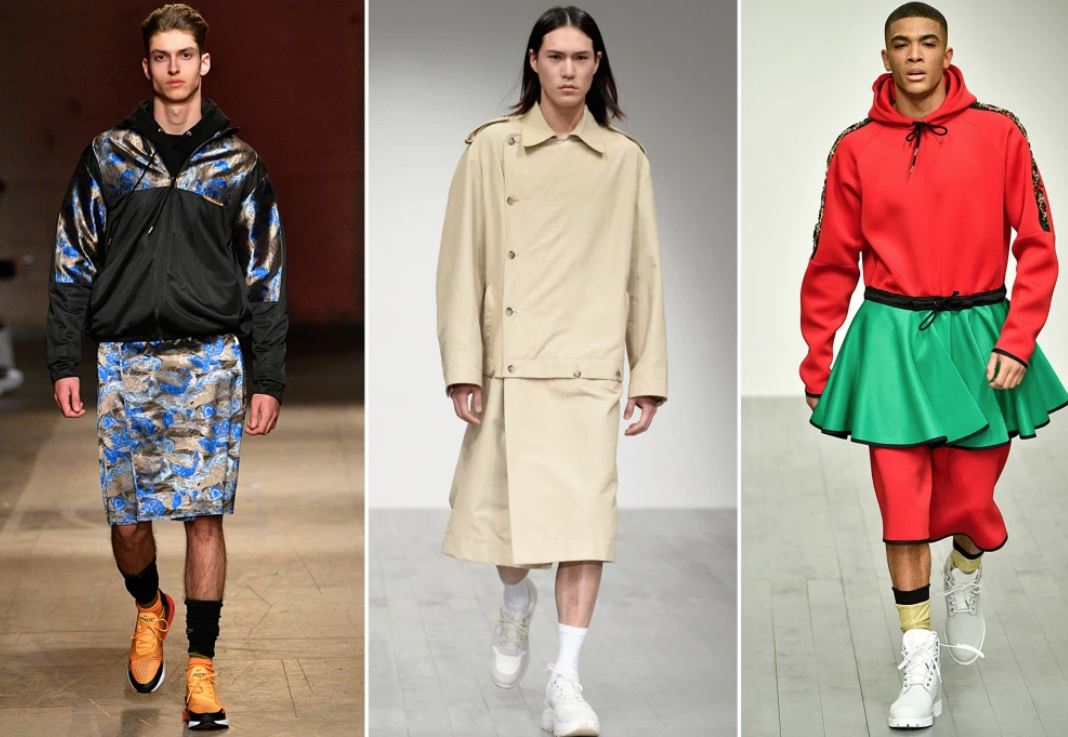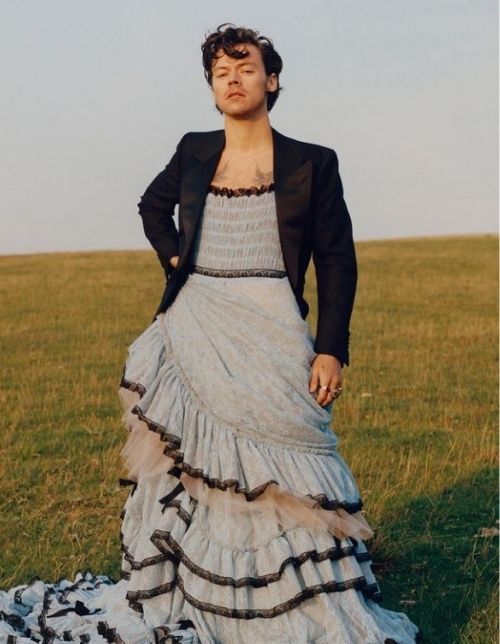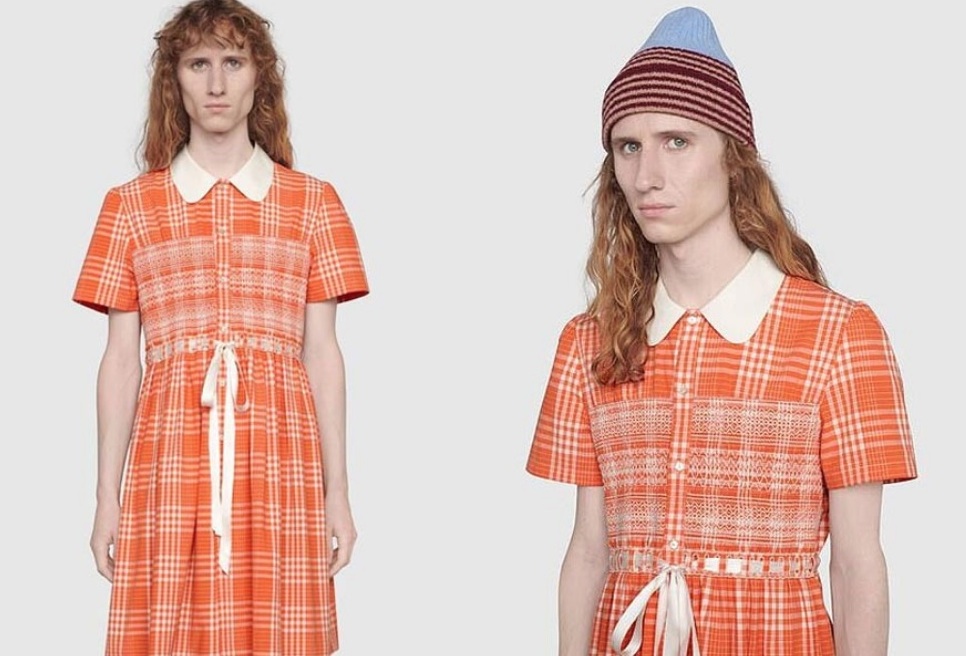Is the world ready for men in skirts?
Are more men ready to wear skirts in public? Put another way, is the skirt on the verge of becoming a mainstream alternative to the trousers, even a staple in every guy’s wardrobe, as men in the new normal decide what to wear to the office or after-six cocktails?
We ask this in the wake of British singer-actor Harry Styles’ recent decision to appear on the cover of US Vogue wearing a long ruffled dress paired with a tuxedo jacket.
The sold-out issue is groundbreaking in many respects, as it’s the first time in the magazine’s 127-year history to feature a solo man on its cover. The inside pages, of course, have an accompanying cover story and fashion shoot featuring the flamboyant celebrity wearing several more designer skirts and dresses.
Styles, who rose to fame not only for his music and good looks, but also for his rather unusual fashion sense, may have gained the world’s attention for agreeing to do something that’s so seemingly radical. But most of the designers we interviewed for this story appear unimpressed.

After all, what Styles attempted to do has been done before by supposed real men in real life, albeit not as contrived and as showy as Vogue had envisioned for its very first “cover boy.” Our respondents are also divided whether or not mainstream men, especially macho Filipinos, are ready to wear the saya for a change.
Back in time
If we go back in time, says designer Noel Crisostomo, flowing skirts that reached the ankles were the go-to clothes of ancient Egyptian, Greek and Roman men.
Even today, Scottish, Burmese and certain tribal men in Southeast Asia, including the Philippines, wear knee-length skirts and consider them not only as articles of clothing to cover and protect certain parts of the body, but also as part of their respective national identities.
Known, for instance, as the kilt in Scotland and first worn by Scottish men living in the Highlands, these skirts made of heavy tartan are a form of heritage clothing, which, depending on the pattern and color combination, represents the groups or clans the men belong to.
Rajo Laurel: It’s really a silly concept to assign gender on clothes. Clothes are clothes! We should wear what we like and love.
Sometime during the 16th century, Noel continues, men gradually stopped wearing skirts, as Western innovations in tailoring started introducing early forms of the trousers, which eventually became the staple bottom garment for most men the world over.
“With this development also came the continuous invention and introduction of new fabrics, particularly polyester and various stretch materials, which were added to the yarns to make fabrics more comfortable,” he says. And with that, the trousers evolved to what they’ve become today, an irreplaceable item in every man’s wardrobe.
When Noel, a Filipino-Canadian, was based in Toronto some years back, he once catered to a fashion-forward Asian guy. Not only was this male fashionista in his element wearing skirts in masculine fabrics Noel designed for him, he even willingly agreed to slip into one of the designer’s rather unusual creations: a pair of see-through palazzo pants!
“But he’s probably one in a million,” Noel says with a laugh. “I don’t think skirts for men are going mainstream anytime soon. Even if you exclude Filipino men who are generally conservative when it comes to fashion, I don’t think the rest of the world is ready to make the skirt a fashion staple for men.”
Styles as fashion peg

Stylist-slash-designer Monika Ravanera considers Styles as the next probable “fashion peg for men.” Thanks to his lead, “Filipino men who want to express themselves through fashion can turn their fear of being different into a fun moment,” says Monika.
But, like Noel, she also believes that it would take “quite a long time” for the skirt to go mainstream among Filipino men. Like an exotic dish, wearing a skirt won’t be for everybody. Rather, it would most likely be an “acquired taste” that appeals only to a select few.
“Much as I try, I still can’t visualize seeing a ready-to-wear rack of skirts in the men’s section of a department store or online fashion site,” she says. “Filipinos, by and large, are still conservative when it comes to expressing themselves through clothes.”
It’s tradition!

Designer Jojie Lloren who, on certain high-profile occasions in the past has worn skirts, points to the tradition of certain Southeast Asian tribes, even in Mindanao, for men to wear skirts as part of their daily wardrobe. But what about Filipino men in the cities?
If wearing sarongs on the beach counts, then it’s a start. “Perhaps this tells us that there are Filipino men out there who are somehow ready to wear skirts in the city,” says Jojie.
All it takes, he adds, is a catalyst consisting of a few really straight, high-profile men to wear skirts to events or even on a casual day at work. “It’s very possible,” he says, since trends in fashion, in most cases, anyway, trickle down from the top.
Innate Pinoy creativity
If he is to go by Filipinos’ “innate creativity” and penchant to follow Western trends, designer Michael Leyva also believes that Filipino men are ready to wear skirts. And that acceptance, he declares, won’t be limited to openly gay men.
“If straight men see them being worn by a growing number of prominent fashion influencers who are straight themselves, then it will make it easier for skirts for men to go mainstream,” Michael adds. Unlike those worn by Styles though, skirts designed for the every man should still conform to certain established norms—from the style to the fabric, down to the color—of men’s fashion.
Noel Crisostomo: Even if you exclude Filipino men who are generally conservative when it comes to fashion, I don’t think the rest of the world is ready to make the skirt a fashion staple for men.
Like majority of the designers interviewed for this feature, Monika hasn’t done done a skirt yet for a male client. But if asked to do so, she won’t think twice.
“Not just a skirt, actually,” she says with chuckle. “If a groom, say, wants to wear a wedding dress on his wedding day, why not? Who am I to stop him from expressing himself? As a designer though, I will have to prepare myself to face the mixed reactions coming from other people.”
Earning precious cabinet space

London-based Filipino designer Lesley Mobo, again, basing it on Filipino culture in the South, sees no major hindrance for the skirt to earn precious space in many a man’s cabinets.
Lesley notes that certain tribes in Mindanao, particularly the Maranao and Maguindanaoan tribes, still wear a variation of the malong, which, he adds, is the “equivalent of Indonesia’s sarong.”
“Men there mostly wear the malong skirt, sometimes over their trousers, in dark shades of red or magenta,” says Lesley. “It’s also good to note that there are plenty of versions of this tubular skirt among certain Philippine tribes.”
To Lesley, encouraging Filipino men to wear skirts goes beyond fashion trends. Instead, it also has to do with practicality and celebrating the country’s culture.
Lesley Mobo: With a tropical climate such as ours, it’s quite appropriate and comfortable to wear a silk, linen, or cotton skirt instead of a pair of trousers.
“With a tropical climate such as ours, it’s quite appropriate and comfortable to wear a silk, linen, or cotton skirt instead of a pair of trousers,” he adds.
Comfort and style
Fellow designer Rajo Laurel agrees with Lesley on the comfortable part. Although he himself is open to wearing skirts, he’s a bit unsure if majority of men share his rather liberal approach to fashion.
“Well, I would like to see them being worn by men more often,” he says of the skirt. “After all, we do have a history as a people regarding this through the bahag and sarong.”
Rajo also cites that in more recent times, certain men have already started wearing skirts, particularly in the New Wave era that came with the 1980s.
If people started putting aside gender roles on particularly pieces of clothing, then the skirt would really take off among men—gay or straight, traditional or avant-garde, he adds. “It’s really a silly concept to assign gender on clothes. Clothes are clothes! We should wear what we like and love.”
And since fashion is cyclical and often a product of the times, it’s really not farfetched that more men might start wearing skirts. “Life’s too short! Wear that skirt if it makes you happy,” Rajo declares.
Banner photo from GQ UK


